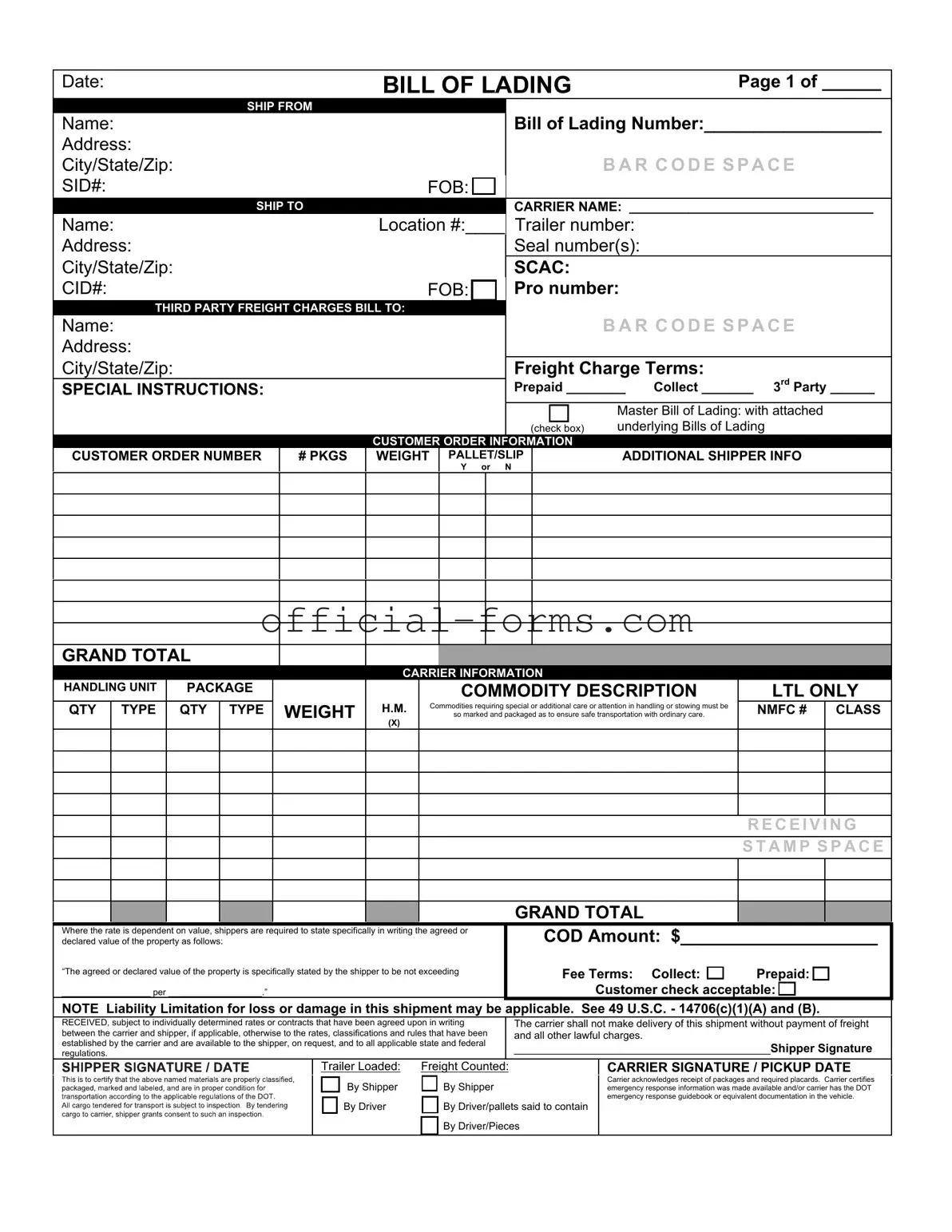Filling out a Bill of Lading with a Supplement form can be a straightforward process, but mistakes often occur. One common error is failing to provide accurate shipper and consignee information. This includes names, addresses, and contact numbers. Inaccurate details can lead to delays in delivery and complications in communication.
Another frequent mistake is neglecting to include a complete description of the goods being shipped. It’s crucial to specify the type of goods, their quantity, and any special handling requirements. Omitting this information may result in improper handling or even loss of the shipment.
Some individuals forget to check the weight and dimensions of the shipment. Providing incorrect weight can lead to additional charges or issues with transportation. Always double-check these details to ensure accuracy.
Additionally, many people overlook the importance of selecting the correct freight class. This classification affects shipping costs and the method of transportation. Misclassifying goods can lead to unexpected fees or delays.
Another common mistake is failing to sign the Bill of Lading. A signature is essential as it serves as proof of agreement between the shipper and carrier. Without it, the document may be considered invalid.
Some individuals may also skip reading the terms and conditions associated with the Bill of Lading. Understanding these terms is vital, as they outline the responsibilities and liabilities of each party involved in the shipment.
In some cases, shippers forget to indicate whether the shipment is prepaid or collect. This designation affects how shipping costs are handled. If not specified, it can lead to confusion and disputes later on.
Another mistake is using outdated forms. Always ensure that you are using the most current version of the Bill of Lading with a Supplement form. Using an old version can lead to compliance issues.
People sometimes fail to keep copies of the completed Bill of Lading. It’s important to retain a copy for your records, as it serves as a reference in case any disputes arise regarding the shipment.
Lastly, some shippers do not communicate effectively with the carrier. Clear communication about the shipment’s details and any special instructions can help avoid misunderstandings and ensure a smooth delivery process.
